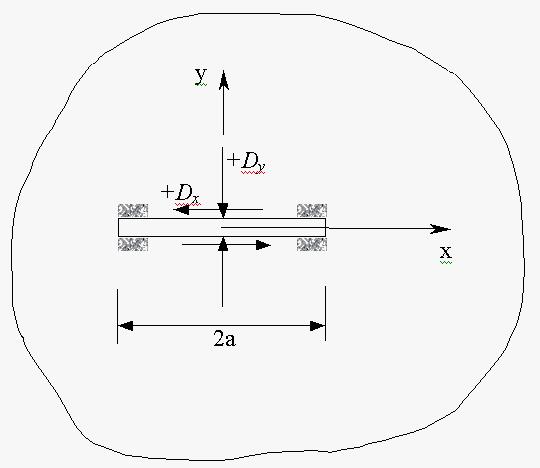Displacement Discontinuity Method in an infinite solid
The problem of a constant displacement discontinuity over a finite line segment in the x, y plane of an infinite elastic solid is specified by the condition that the displacements be continuous everywhere except over the line segment in question. The line segment may be chosen to occupy a certain portion of the x-axis, say the portion |x|≤a, y=0. If we consider this segment to be a line crack, we can distinguish its two surfaces by saying that one surfaces is on the positive side of y=0, denoted y=0+ , and the other is on the negative side, denoted y=0- . In crossing from one side of the line segment to the other, the displacement undergoes a constant specified change in value Di = (Dx, Dy).
We will define the displacement discontinuity Di as the difference in displacement between the two sides of the segment as follows:
 2-1
2-1
Because and are positive in positive x and y co-ordinate direction, it follows that the Dx and Dy are positive as illustrated in Figure 2-1.

Figure 2-1. Constant displacement discontinuity components Dx and Dy.
The solution of the subject problem is given by Crouch (1976) and Crouch and Starfield (1983). The displacement and stresses can be written as:
 2-2
2-2
and
 2-3
2-3
where f,x represent the derivative of function f(x,y) against x, similarly as for f,y, f,xy, f,xxy etc. Function f(x,y) in these equations is given by:
 2-4
2-4